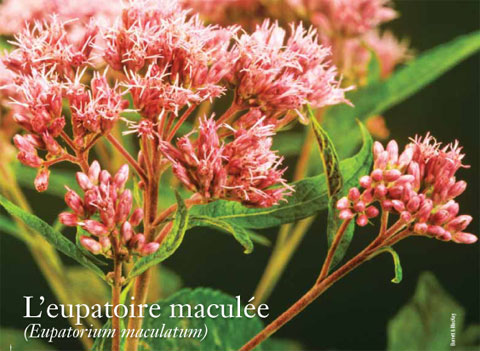
SCIENTIFIC NAME
Eupatorium maculatum
DESCRIPTION
The Spotted Joe-pye weed stands between 60 centimetres and 1.8 metres tall. The leaves, which are six to 20 cm long, are also short-stalked, lanceolate, sharp-toothed and occur in whorls of three to five. The flowers are pinkish-purple tubular florets and occur in flat-topped clusters 10 to 14 cm wide. They can be seen in bloom from July to September. Their fruit are seed-like achenes with tuft of soft hair.
RANGE
The Spotted Joe-pye weed is native to Canada and can be found in all provinces except Prince Edward Island.
HABITAT
You can find this plant in meadows, shorelines and damp thickets.
DIET
BEHAVIOUR
undefinedPRIMARY ECOSYSTEM ROLES
This plant feeds several species of butterfly including orange sulphur, pearl crescent, painted lady, giant swallowtail, tiger swallowtail, variegated fritillary, pearl crescent and red admiral.






